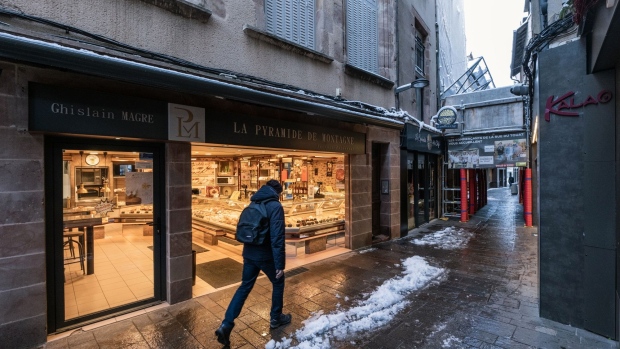Feb 1, 2023
European Gas Swings as Cooler Weather Approaches Next Week
, Bloomberg News

(Bloomberg) -- European natural gas futures rose for a second day as colder weather next week is poised to boost demand for the fuel used for heating.
Benchmark futures advanced as much as 6% on Wednesday in volatile trading. Temperatures will drop below normal from Rome to Berlin and Stockholm next week, according to forecaster Maxar, though are generally expected to be milder than usual for the rest of the month.
Read more: Mild February Will Help Extend Europe’s Gas Storage Buffer
The cold spell next week signals the possibility of heavier withdrawals from the region’s gas storage sites, though inventories are still almost 73% full and well above average levels of the last five years. How low they get by the end of the winter will determine the severity of the energy crunch next summer and the following heating season.
Steady supplies have helped to keep gas prices relatively low in recent weeks. Russian gas transit via Ukraine edged up from Tuesday, and liquefied natural gas flows remain higher than usual for the time of the year.
Continued LNG supply is key for Europe, which can no longer rely on Russia for pipeline gas following the nation’s invasion of Ukraine. Traders are watching progress on restarting the Freeport LNG plant in the US. Attention is also on a grounded LNG carrier in the Suez Canal, a key artery for traffic of super-chilled fuel, although the ship is expected to be refloated within a few hours.
Rehden, a major gas storage in Germany, halted operations on Tuesday for three days after a deflagration at a flare. But there’s been no impact on the security of supply, according to its operator.
Dutch front-month futures, Europe’s gas benchmark, advanced 3.5% at €59.35 a megawatt-hour at 3:04 p.m. in Amsterdam. The UK equivalent was up 4.5%.
French and German power prices for next month gained slightly. The Benchmark year-ahead German contract advanced 4.1% to €184 per megawatt-hour.
--With assistance from Elena Mazneva and Todd Gillespie.
©2023 Bloomberg L.P.





